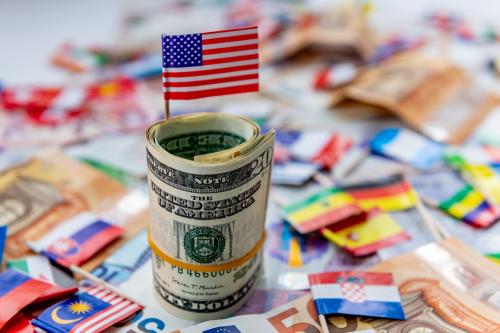The independence of U.S. monetary policy from politics has been an important reason for its success. The Fed is responsible to Congress and it reports regularly on its views of the economy and its policy stance. But it does not allow politicians, including the President, to sway monetary policy. Now, as the political climate heats up, that independence is coming under attack. Among the Republican presidential hopefuls, Senators Rand Paul, Ted Cruz and Marco Rubio have sponsored a bill that would effectively give politicians real-time oversight of policy. The Fed has not always been right, and experts often disagree about what the best policy at any moment, but nobody should believe we would have done better over the years if politicians were involved in steering monetary policy.
The Fed’s independence began with the 1951 Accord between the Treasury and the Fed, which freed monetary policy from mainly accommodating the Treasury’s borrowing needs. The Fed Chairman’s term is for four years, but is renewable. And just two men–Bill Martin and Alan Greenspan– have chaired the Fed more than half the 64 years since the Accord. This is strong evidence of both independence and nonpartisanship at the Fed. Both men served under both Republicans and Democrats and their Presidents never had ground to replace them for partisan reasons. It also suggests some luck in that the economy was not doing badly at the time a term was expiring for either man. Neither became a fall guy.
Crises have been a strong test of the Fed’s independence. In 1979, when the second oil price surge threatened a further escalation in inflation, Jimmy Carter brought in Paul Volcker to replace Bill Miller as Fed Chairman. Miller was made Treasury Secretary. Volcker was an economist who had served as Assistant Treasury Secretary under Richard Nixon and as Chairman of the Federal Reserve Bank of New York. He was known as a strong anti-inflation hawk. But few judged just how tough he would be in fighting inflation.
Within months of taking over, Volcker had pushed interest rates to historic levels, with short-term Treasury bills yielding 20 percent. The economy nosedived in the first half of 1980. High borrowing costs and high unemployment hurt Carter when Ronald Reagan won that year’s Presidential election. But Volcker played no favorites. The economy plunged deeper into recession in 1982 as policy rates rose again, costing the Republicans in the off-year elections. Volcker got a second term in 1983. And Alan Greenspan’s long tenure began four years later.
In 2006, George W. Bush appointed Ben Bernanke, his chief economic adviser, to succeed Greenspan as Chairman. Like Volcker, Bernanke would push policy beyond previous historic limits, but in the opposite direction. The financial crisis that led to the Great Recession threatened the operation of the financial system and required extraordinary interventions by the Treasury and Fed. And that cooperation continued when Obama became President.
Critics can point to what might have been done a bit differently. But history will surely give very high marks to the rescue of the system at that time. Once the system’s solvency was assured in 2009, the economy bottomed and, with the help of temporary fiscal stimulus, recovery began. Obama reappointed Bernanke in 2010, and with short-term interest rates at their zero lower bound, he led the Fed to quantitative easing — unconventional policies that directly reduce long-term interest rates. While history will have to judge the success of these policies, the U.S. economy has recovered far better than the rest of the world. Janet Yellen succeeded Bernanke as Fed chair and continued a similar policy path. As the economic recovery continues, she is now tasked with getting policy back toward normal without disrupting the ongoing expansion.
This postwar record of the Federal Reserve is a story of independence, competence, nonpartisanship, and success. And a key reason for this record has been the implicit oversight of the community from which Fed chairs and other officials are chosen. Except for Miller’s brief tenure before Volcker, the Fed Chairs have all come from the world of economics and finance. Most have been prominent as academic economists with expertise in public policy, finance and central banking. Within that community of experts, ideas are widely discussed, debated and evaluated. The last three chairs have all been active participants in the Brookings Panel on Economic Activity, which focuses economic research and debate on issues of public policy. Through such organized channels and other professional interactions, there is plenty of room for partisanship in economic policy. And it is expressed daily on the Hill and in the White House. But among these professionals, there is also an appreciation that independence and nonpartisanship are important at the Fed. And that conviction has carried the day. Let’s keep it that way.
This post originally appeared on
Real Clear Markets
.


Commentary
Op-edTreasuring the Fed’s independence
September 29, 2015